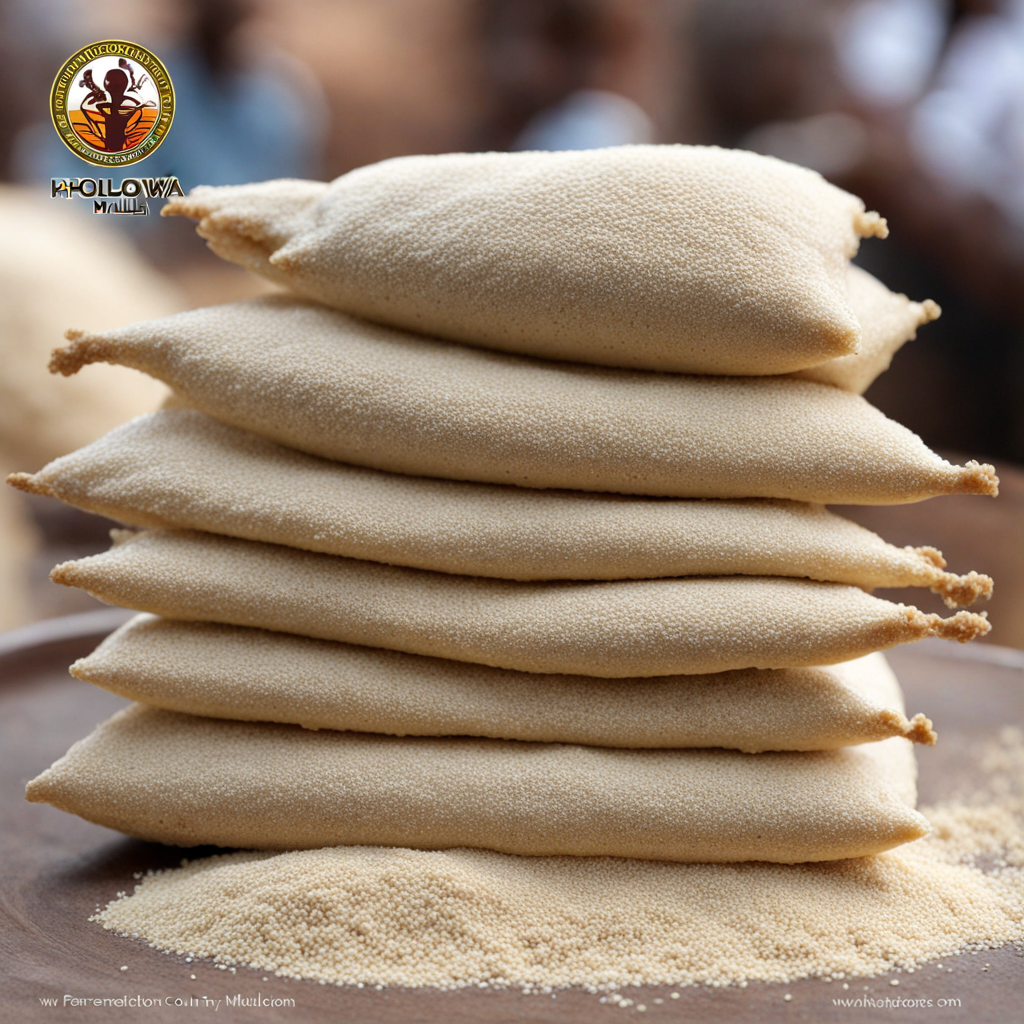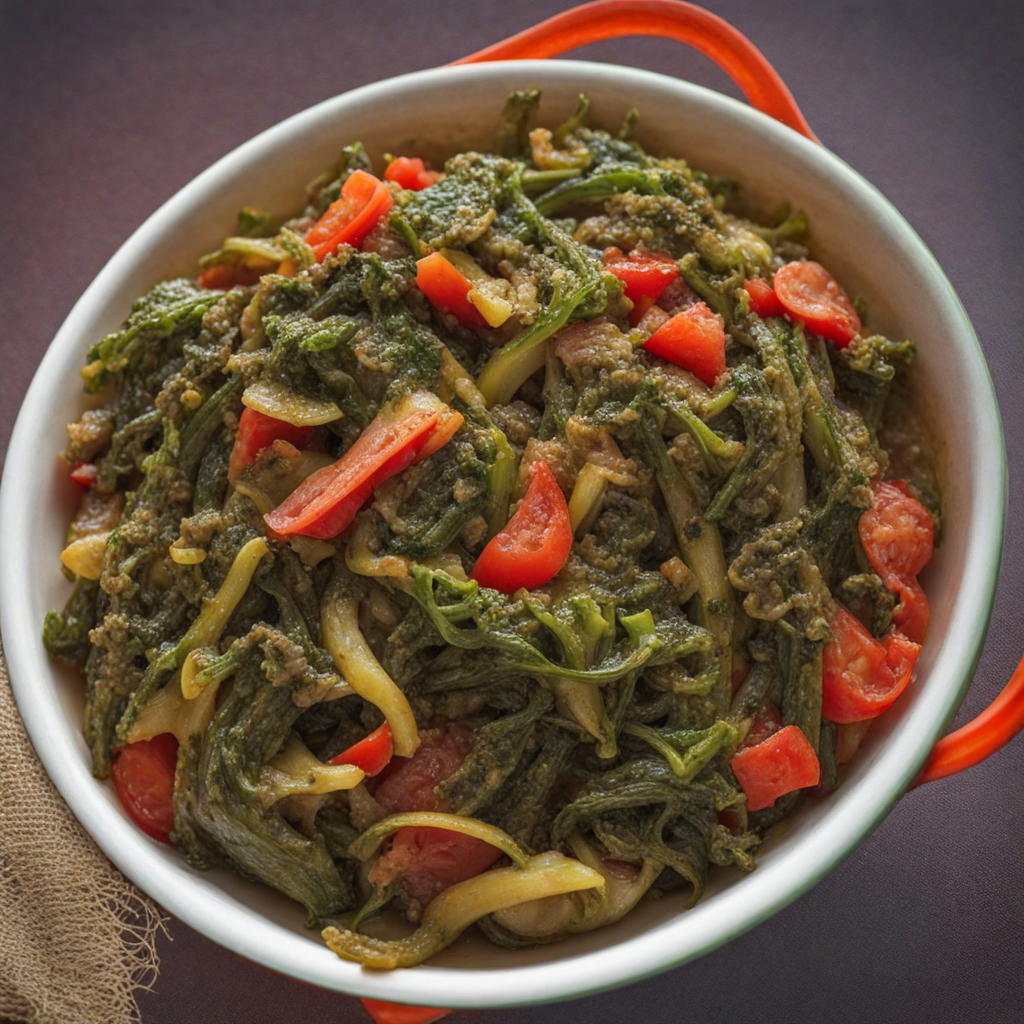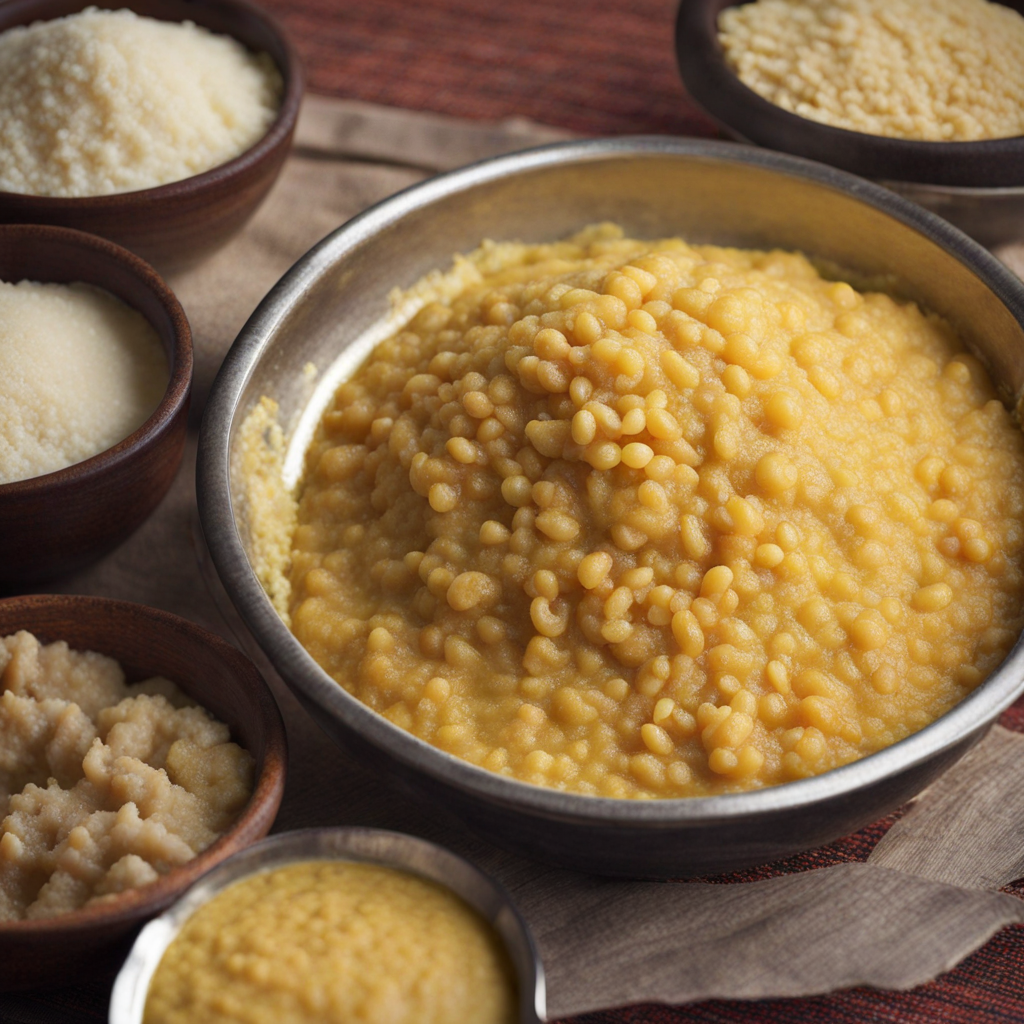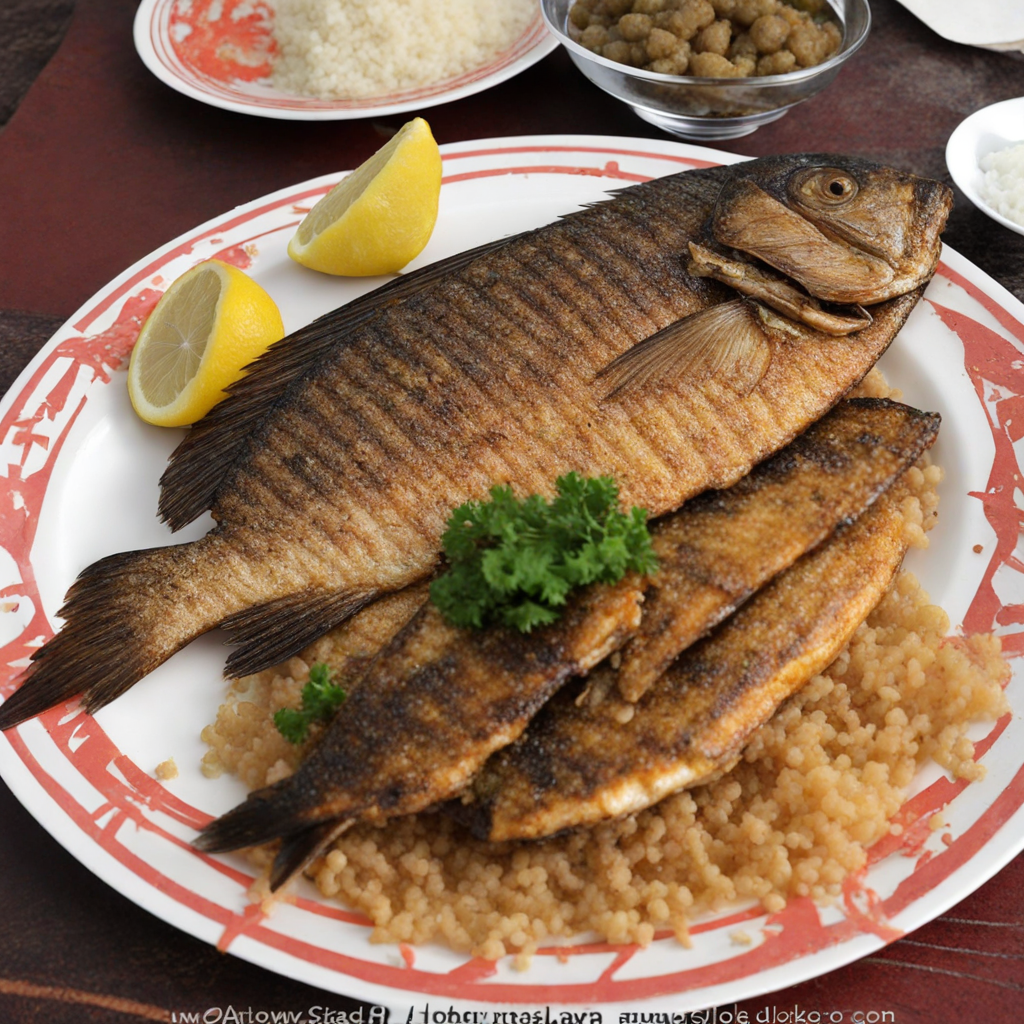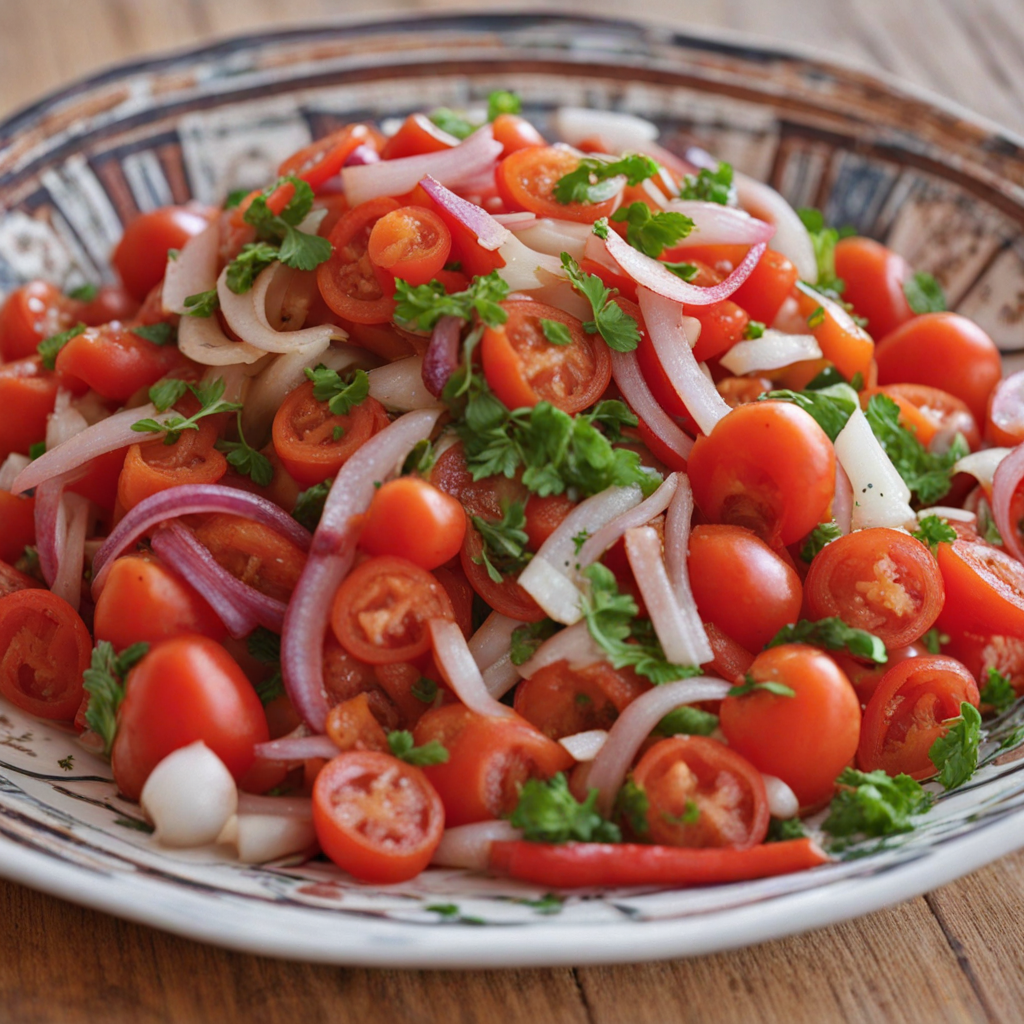Kholowa
Kholowa is a traditional Malawian dish that showcases the rich culinary heritage of the region. Made primarily from groundnuts, or peanuts, Kholowa offers a unique, nutty flavor that is both comforting and satisfying. The dish is typically prepared by grinding roasted peanuts into a fine paste, which is then combined with a variety of ingredients such as vegetables, spices, and sometimes meat or fish, creating a hearty and wholesome meal. The texture is creamy and thick, making it perfect for pairing with staple foods like nsima (a maize porridge) or rice, allowing the flavors to meld beautifully on the palate. In addition to its creamy base, Kholowa often incorporates local greens, which add a vibrant color and nutritional value. Ingredients like pumpkin leaves or amaranth are commonly used, contributing earthy notes that balance the richness of the groundnuts. The addition of spices such as garlic, onion, and chili can elevate the dish, providing an aromatic depth that complements the natural sweetness of the peanuts. This combination results in a dish that is not only delicious but also a reflection of Malawi's agricultural bounty and culinary practices. Kholowa is more than just a meal; it embodies the essence of Malawian hospitality and communal dining. Often enjoyed during gatherings and celebrations, it brings people together, inviting them to share in its savory goodness. The dish is versatile, catering to different palates and dietary preferences, making it a beloved staple in many households. By indulging in Kholowa, one embarks on a flavorful journey through Malawi, discovering the simplicity and richness of its ingredients while experiencing the warmth of its culture.
How It Became This Dish
Kholowa: The Heart of Malawian Cuisine Origin and Ingredients Kholowa, often referred to as pumpkin leaves or "chibwabwa" in the local Chichewa language, is a beloved dish in Malawi that showcases the country’s agricultural bounty and culinary heritage. This leafy green is harvested from the pumpkin plant (Cucurbita pepo), a vegetable that thrives in Malawi's warm climate. The use of pumpkin leaves in cooking can be traced back to the early agricultural practices of the Bantu-speaking peoples who settled in the region thousands of years ago. The name "kholowa" itself has roots in the local dialect, reflecting the deep connection Malawians have with their agricultural practices. Kholowa is not just a dish; it embodies the essence of Malawian identity, linking generations through shared culinary traditions. The primary ingredient, pumpkin leaves, is rich in nutrients, making it a staple in a country where food security and nutrition are vital. Pumpkin plants are easy to cultivate, and their leaves can be harvested continuously throughout the growing season, making them an accessible food source for many households. Cultural Significance Culturally, kholowa represents more than just a meal; it is a symbol of sustenance and resilience in Malawian communities. Traditionally, it is prepared as a side dish, often served alongside staple foods such as nsima (a thick porridge made from maize flour) or rice. The integration of kholowa into daily meals emphasizes the importance of vegetables in the Malawian diet, promoting health and nutrition. Kholowa is also significant in social settings and communal gatherings. It is often cooked during family events, celebrations, or ceremonies, where the preparation of food becomes a communal activity that fosters togetherness. Women, who traditionally take on the role of primary caregivers and cooks, often gather to prepare kholowa, sharing stories and strengthening bonds as they work together. This practice highlights the role of women in preserving culinary traditions and passing down recipes through generations. Moreover, kholowa’s versatility allows it to be prepared in various ways, often spiced with ingredients such as onions, tomatoes, and sometimes groundnuts (peanuts), which enhance the flavor and nutritional value of the dish. This adaptability also reflects the broader Malawian culinary philosophy, where local ingredients are used creatively to make nutritious meals. Development Over Time Historically, the culinary practices surrounding kholowa have evolved, influenced by various factors including colonization, globalization, and changing agricultural practices. During the colonial period, Malawi, then known as Nyasaland, experienced significant changes in land use and agricultural practices. European colonizers introduced new crops and farming techniques, altering traditional methods of cultivation. However, local food practices, including the use of kholowa, persisted and adapted within this changing landscape. In the late 20th century, Malawi faced challenges such as food shortages and economic instability, which prompted a renewed focus on local food sources, including kholowa. The promotion of sustainable agriculture and the importance of indigenous crops became a focal point for food security initiatives. Organizations and NGOs began to advocate for the consumption of local foods, highlighting the nutritional benefits of vegetables like kholowa. The advent of the internet and globalization has also played a role in the transformation of kholowa’s presence in Malawian cuisine. With increased access to information and exposure to international culinary trends, younger generations have begun to experiment with traditional recipes. This has led to innovative interpretations of kholowa, such as incorporating it into modern dishes, fusion cuisine, and even vegetarian or vegan adaptations. Furthermore, the diaspora of Malawians abroad has created a demand for traditional foods like kholowa in international markets. As Malawians migrate and settle in different parts of the world, they carry their culinary traditions with them, introducing dishes like kholowa to new audiences. This exchange enriches the global culinary landscape and fosters a greater appreciation for Malawian cuisine. Today, kholowa is celebrated not only in local Malawian households but also in restaurants and food festivals, serving as a bridge between traditional and contemporary culinary practices. Chefs are increasingly recognizing the value of indigenous ingredients and are incorporating kholowa into their menus, showcasing its versatility and health benefits. Kholowa and Nutrition The nutritional profile of kholowa is another reason for its enduring significance in Malawian culture. Pumpkin leaves are an excellent source of vitamins A and C, iron, calcium, and fiber, making them a valuable addition to the diet. In a country where malnutrition remains a concern, kholowa serves as a vital source of essential nutrients, particularly for children and pregnant women. The preparation of kholowa often involves minimal cooking, preserving the leaves' nutrients while ensuring they are palatable. This practice aligns with the growing global emphasis on health-conscious eating and the importance of incorporating more vegetables into diets. Modern Trends and Future of Kholowa In recent years, there has been a resurgence of interest in traditional foods, driven by a global movement towards sustainable and healthy eating. Kholowa, with its rich history, cultural significance, and nutritional benefits, stands at the forefront of this movement in Malawi. Efforts to promote indigenous foods, along with educational campaigns about their health benefits, are helping to revitalize interest in kholowa among younger generations. Social media platforms have also played a significant role in this revival, with food bloggers and influencers showcasing traditional Malawian dishes, including kholowa, to a wider audience. This visibility has sparked curiosity and appreciation for Malawian cuisine, encouraging more people to explore and celebrate their culinary heritage. As Malawi continues to navigate the challenges of the 21st century, kholowa remains a vital part of the nation’s identity. It embodies the resilience of its people, the richness of its agricultural landscape, and the enduring importance of community and tradition in culinary practices. Whether enjoyed in a humble home or a modern restaurant, kholowa will continue to be a cherished dish that nourishes both body and soul, carrying forward the legacy of Malawian cuisine for generations to come.
You may like
Discover local flavors from Malawi



